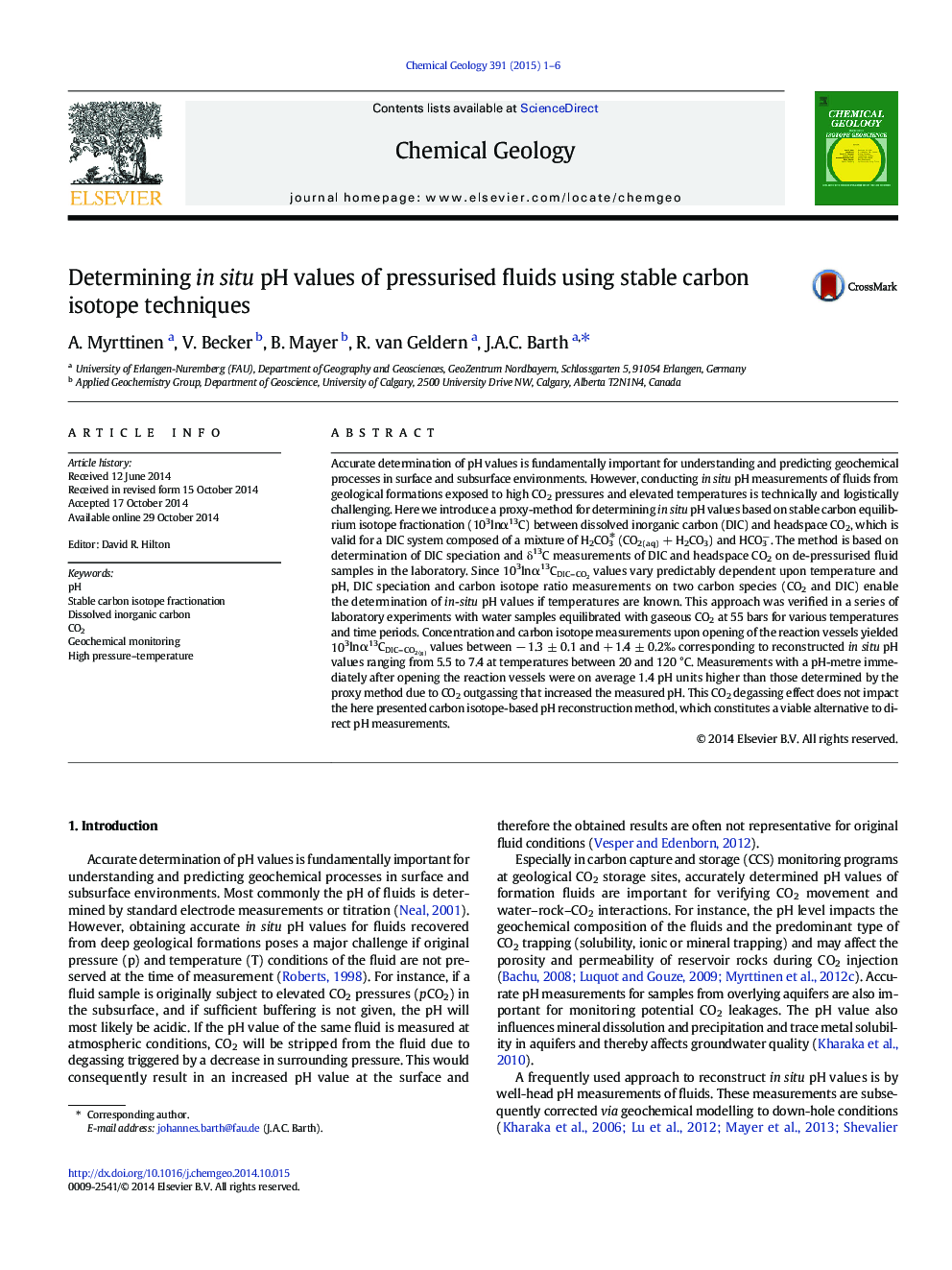| کد مقاله | کد نشریه | سال انتشار | مقاله انگلیسی | نسخه تمام متن |
|---|---|---|---|---|
| 4698617 | 1637581 | 2015 | 6 صفحه PDF | دانلود رایگان |

• A new technique applies stable carbon isotope data to reconstruct pH.
• It works well at elevated p/T conditions (55 bar/120 °C) and pH below 7.5.
• It is a good alternative to direct pH measurements or modelling.
Accurate determination of pH values is fundamentally important for understanding and predicting geochemical processes in surface and subsurface environments. However, conducting in situ pH measurements of fluids from geological formations exposed to high CO2 pressures and elevated temperatures is technically and logistically challenging. Here we introduce a proxy-method for determining in situ pH values based on stable carbon equilibrium isotope fractionation (103lnα13C) between dissolved inorganic carbon (DIC) and headspace CO2, which is valid for a DIC system composed of a mixture of H2CO3⁎ (CO2(aq) + H2CO3) and HCO3−. The method is based on determination of DIC speciation and δ13C measurements of DIC and headspace CO2 on de-pressurised fluid samples in the laboratory. Since 103lnα13CDIC–CO2 values vary predictably dependent upon temperature and pH, DIC speciation and carbon isotope ratio measurements on two carbon species (CO2 and DIC) enable the determination of in-situ pH values if temperatures are known. This approach was verified in a series of laboratory experiments with water samples equilibrated with gaseous CO2 at 55 bars for various temperatures and time periods. Concentration and carbon isotope measurements upon opening of the reaction vessels yielded 103lnα13CDIC–CO2(g) values between − 1.3 ± 0.1 and + 1.4 ± 0.2‰ corresponding to reconstructed in situ pH values ranging from 5.5 to 7.4 at temperatures between 20 and 120 °C. Measurements with a pH-metre immediately after opening the reaction vessels were on average 1.4 pH units higher than those determined by the proxy method due to CO2 outgassing that increased the measured pH. This CO2 degassing effect does not impact the here presented carbon isotope-based pH reconstruction method, which constitutes a viable alternative to direct pH measurements.
Journal: Chemical Geology - Volume 391, 6 January 2015, Pages 1–6